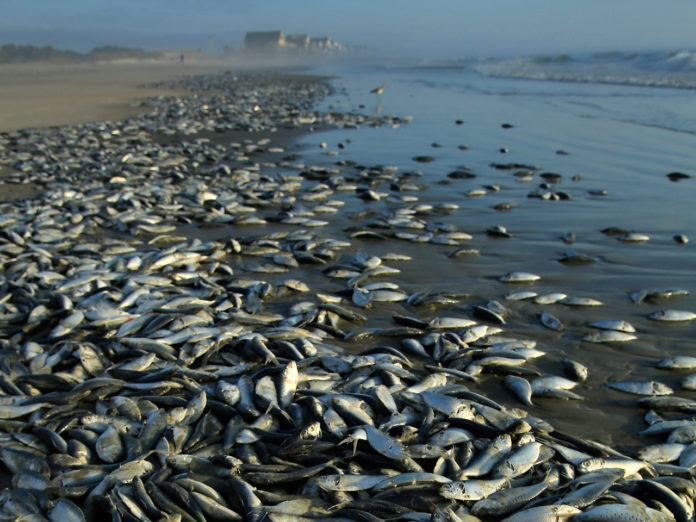
A newly published study concludes that the last mass-extinction that had occurred in our oceans was due to a marked rise of ocean acidity.
Given the disturbingly similar rate that our seas are acidifying right now, that doesn’t bode well for the present either. Parts of the Pacific, for example, are already so acidic that sea snails’ shells begin dissolving as soon as they’re born.
The Permian Extinction event, or the Great Dying, was the biggest die-off in history. It eliminated over 90 percent of the planet’s species, and 96 percent of its marine species. The new study, published in Science, offers some proof that acidification was a key reason for this mass-extinction.
A team led by University of Edinburgh researchers used boron isotopes found within rocks found in the United Arab Emirates to model the changing levels of acidification in our prehistoric oceans.
They hypothesize that a series of gigantic volcanic eruptions in the Siberian Trap had released an enormous plume of carbon dioxide into the atmosphere over a period of tens of thousands of years. This was but the first phase of the extinction event, in which terrestrial life began to die out. The study claims that the second phase of the event was over much more quickly. “During the second extinction pulse, however, a rapid and large injection of carbon caused an abrupt acidification event that drove the preferential loss of heavily calcified marine biota,” the authors write.
So does this study mean we should be especially worried about the phenomenon taking hold today?
“Yes,” said Dr. Rachel Wood, a professor of carbonate geoscience at the University of Edinburgh and one of the paper’s authors.
“We are concerned about modern ocean acidification,” she told me in an email. “Although the amount of carbon added to the atmosphere that triggered the mass extinction was probably greater than today’s fossil fuel reserves, the rate at which the carbon was released was at a rate similar to modern emissions.”
In other words, the Siberian Trap probably released more carbon dioxide in total, and more than humans alone are capable of producing in total, but we’re releasing the stuff just as quickly.
“This fast rate of release was a critical factor driving ocean acidification,” Wood said. “The rate of release is critical because the oceans absorb a lot of the carbon dioxide (CO2) from the atmosphere, around 30 percent of the carbon dioxide released by humans,” Wood said.
“To achieve chemical equilibrium, some of this CO2 reacts with the water to form carbonic acid. Some of these molecules react with a water molecule to give a bicarbonate ion and a hydronium ion, thus increasing ocean ‘acidity’ (H+ ion concentration). Between 1751 and 1994, surface ocean pH is estimated to have decreased from approximately 8.25 to 8.14, representing an increase of almost 30 percent in H+ ion concentration in the world’s oceans,” Wood said.
“Scientists have long suspected that an ocean acidification event occurred during the greatest mass extinction of all time, but direct evidence has been lacking until now,” study coordinator Dr. Matthew Clarkson said in a statement. “This is a worrying finding, considering that we can already see an increase in ocean acidity today that is the result of human carbon emissions.”
You want to support Anonymous Independent & Investigative News? Please, follow us on Twitter: Follow @AnonymousNewsHQ




